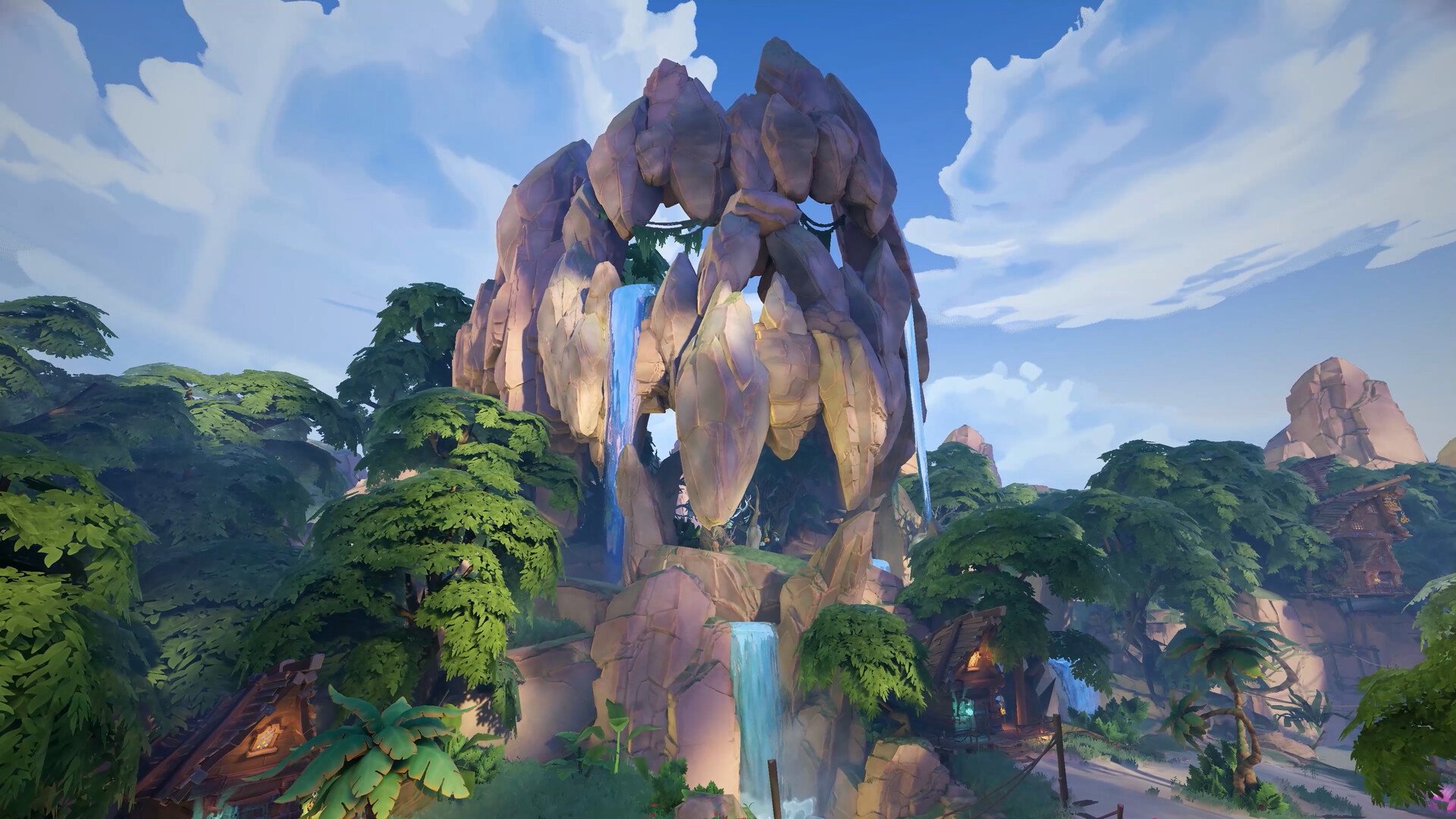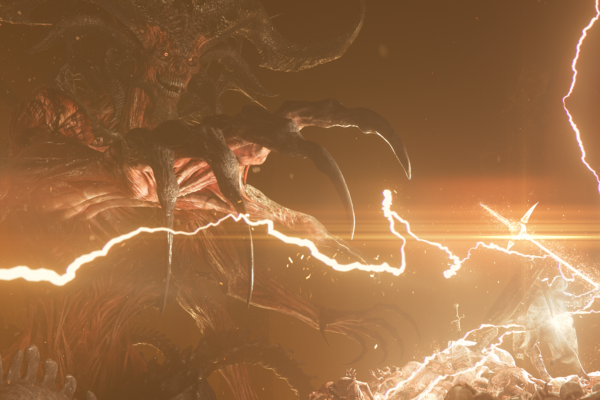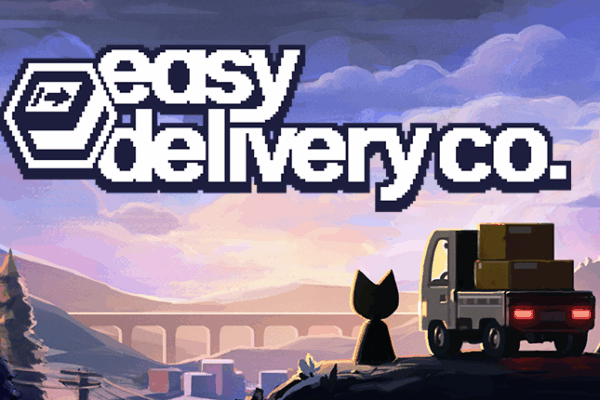I already knew going into Fellowship’s Early Access release, I’d have a blast. I’d spent hours in previous betas and playtests and was eagerly awaiting its Early Access release date. Built by Chief Rebel, a studio comprised of veterans of major MMOs and action-RPGs, Fellowship’s core promise is to strip away the padding that often surrounds multiplayer and MMORPG dungeon runs and zero in on the thrill of high-stakes co-op play. In essence: for those of us who loved the dungeon sequences in games like World of Warcraft, Fellowship asks: what if you could skip the 200-hour level grind and just get right into the fun?
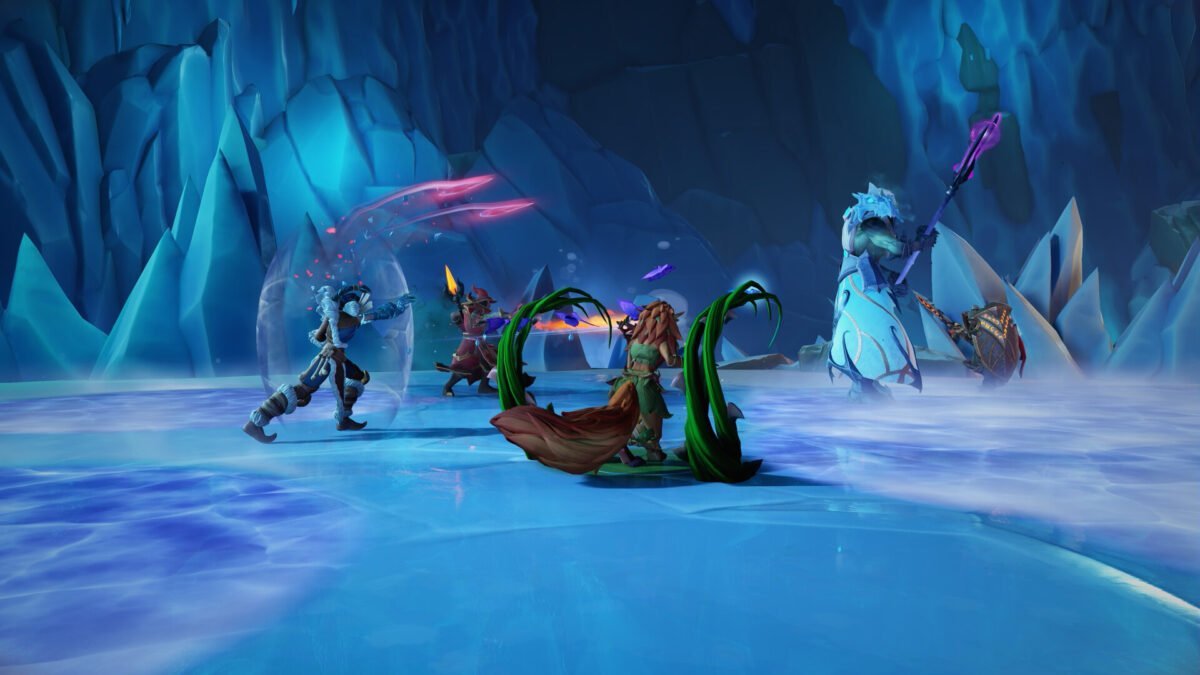
Straight to the Action
What’s fascinating about Fellowship is that there’s no sprawling overworld, no endless quest chains, no tedious gear treadmill or leveling before you can actually do the thing you came here for. You log in, you pick a hero (tank, healer, or damage dealer roles, of course) and you start running dungeons. That’s it.
Coming from years of World of Warcraft, I’m used to treating dungeons as a reward for all the hours of grinding that come before them. Fellowship flips that dynamic on its head. It’s built entirely around the idea that cooperative, small-group dungeon crawling is the core game, not the destination after a long slog. You’re not working toward the fun; you’re already in it from the first moment.
And it works incredibly well. There’s something liberating about booting up a game and being in a full party within minutes, ready to pull a room of enemies and test your teamwork. No dailies, no reputation bars, no errands for the local blacksmith. Just four players, a gauntlet of encounters, and the slow, satisfying mastery that comes from repetition and failure. It’s obvious the team at Chief Rebel has played their fair share of MMORPGs and knows how to separate the wheat from the chaff, so to speak, ensuring we get all the good parts of dungeon running without the fluff.
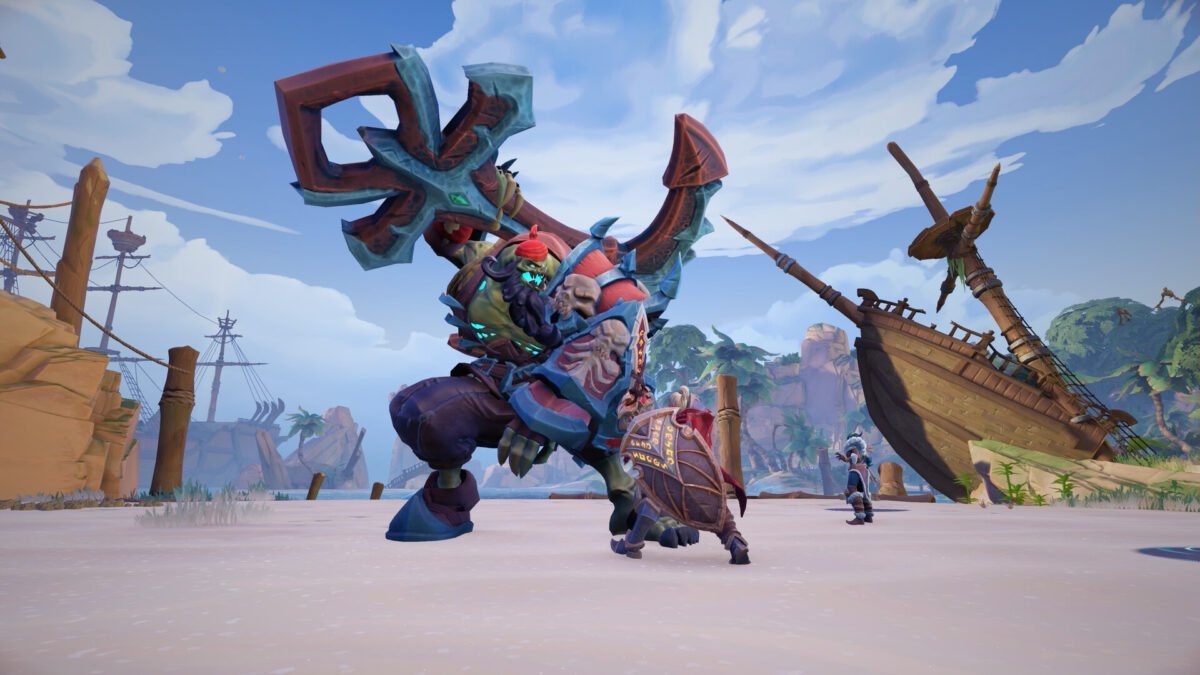
The Dungeon Loop
Each dungeon in Fellowship feels handcrafted, but not in the ornate, cinematic sense. The layouts are tight and purposeful, built to challenge your coordination rather than wow you with vistas. The first few dungeons you’ll experience are much more straightforward than you may expect, culminating in a single boss fight, with each of these dungeons expected to be ran in about 10 minutes. But eventually, you unlock capstone dungeons, which are the full-scale big boys with 3+ bosses and a runtime of 25-30 minutes or so.
The structure is straightforward: clear a few trash pulls, kill a boss, collect the loot. It’s familiar if you’ve ever played an MMO dungeon, but the pacing here feels faster, leaner, and somehow more urgent. Fights are compact and kinetic with no fluff phases, no filler mobs. You still need to clear a certain amount of mobs “for percent”, but it’s typically a straight line towards the boss to do so.
I’ve spent most of my time as a tank, managing enemy positioning and cooldown timing. You can’t coast on instincts here. If you pull too early or overextend, your healer’s mana pool evaporates, and suddenly you’re looking at a full wipe. But the true magic is when your party is truly aligned, when interrupts land perfectly, cooldowns sync, and the healer saves your life at 2% HP. A classic dungeon running experience that feels frequent htroughout Fellowship.
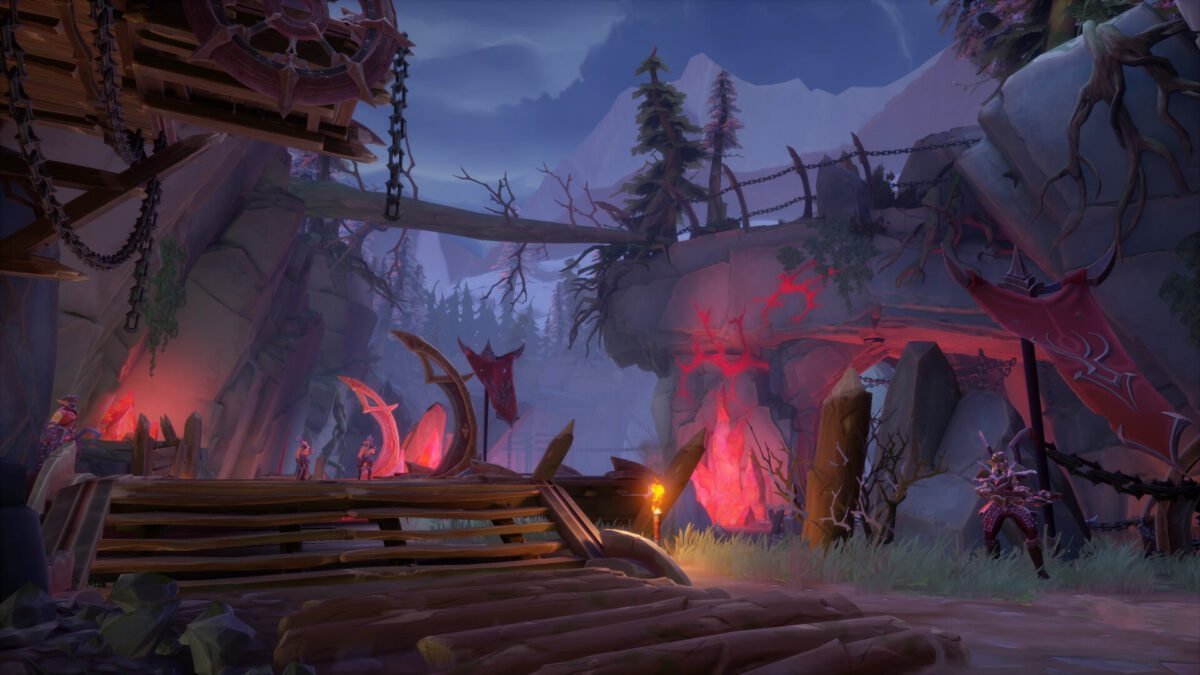
Scaling the Challenge
As you progress through the tiers of difficulty in Fellowship, new affixes are added to the dungeons. Some are universal, like the addition of a new boss mechanic/skill as you increase difficulty, while others are unique to a specific dungeon, such as AoE meteors falling throughout the dungeon that you must quickly dodge.
What I love about this system is how it naturally teaches you to communicate, learn, and adapt. By the time my group hit the second difficulty, every run started with quick, tactical planning: who’s handling what big interrupts, who’s saving burst for the add phase, when we’re using defensive cooldowns. It’s not rigid or overly mechanical like it can be in MMORPGs, but it’s the kind of organic coordination that comes from a team that’s failing forward together. Another testament to exactly what Chief Rebel has pulled off with Fellowship; refining the fun parts.
In that sense, Fellowship nails what I’ve always loved about high-level dungeons in WoW’s Mythic+ system: that razor-edge balance between chaos and control. It’s not just about numbers or gear, it’s about trust dynamic with your party. The difference is that Fellowship doesn’t make you earn that trust over 60 hours of leveling.
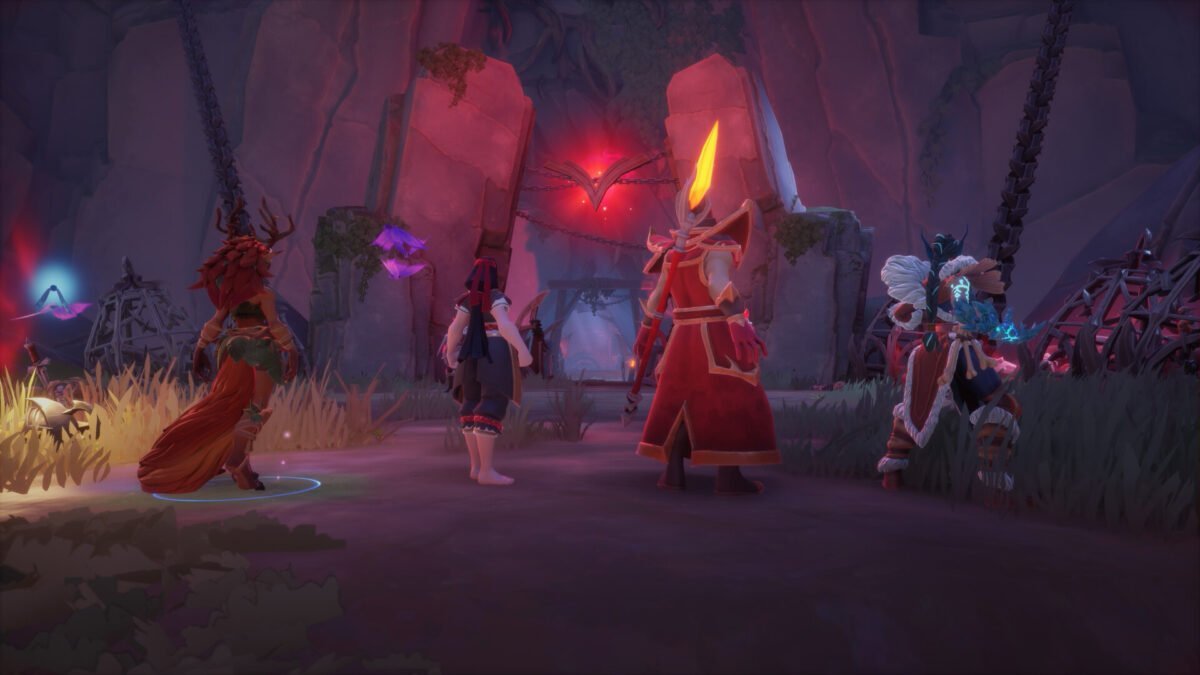
Loot and Progression
Progression in Fellowship is deliberately understated right now. You earn gear at the end of each run, but it’s less about chasing big power spikes and more about fine-tuning your loadout to complement your team’s playstyle. The loot cadence is slower than I expected—one or two meaningful drops per dungeon—but I actually appreciated that. It made every piece feel deliberate. There’s also, of course, RNG involved. There are four tertiary stats, with gear often rolling two of them, one with a higher value than the other. Each character of course has its own “best” tertiary stats, so you have the added element of not only getting the gear drop you want, but for it to ideally roll the best stats for you.
That said, I’d be lying if I said I didn’t want just a little more variety. You’ll quickly start seeing the same gear over and over as you grind through the dungeons. The bones of a great loot system are here, but it’s clear this part of the game still needs fleshed out a bit.
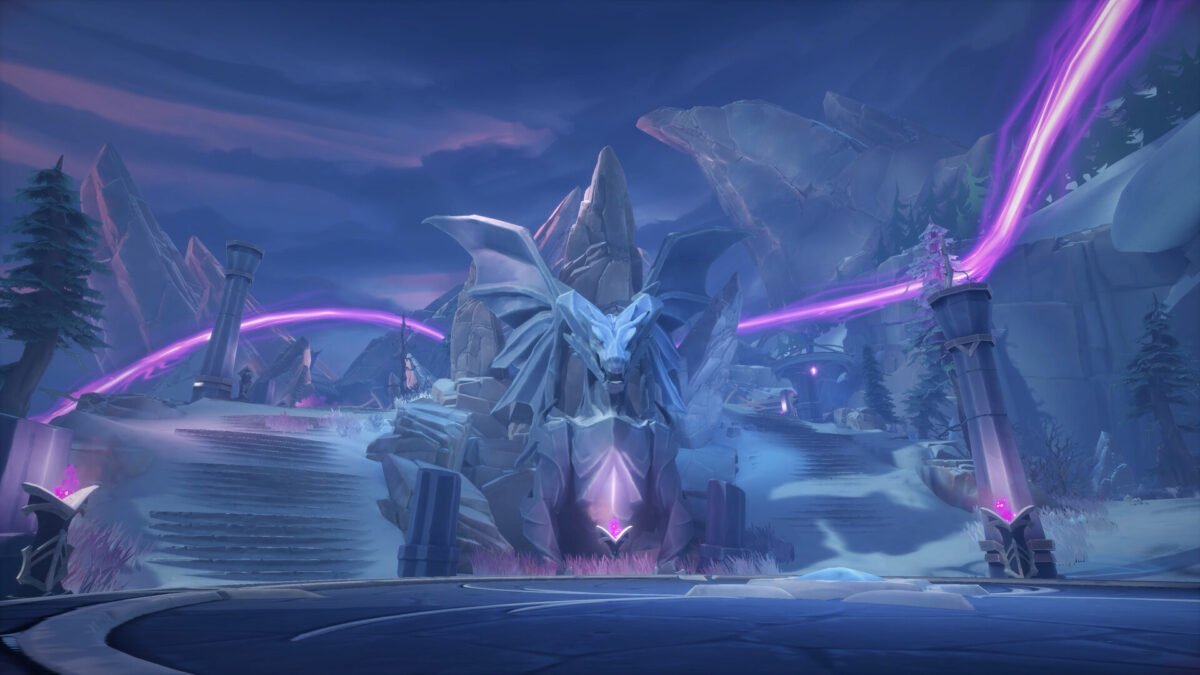
The Feel
Mechanically, Fellowship feels snappy and responsive. Animations have just enough weight to sell impact without feeling sluggish. Abilities connect cleanly, and tanking in particular feels tactile, with satisfying hits and readable telegraphs. There’s an underlying sense of clarity that reminds me of games like Helldivers 2 or Darktide, where the screen might be chaos, but your role within it is always clear.
Visually, the art direction leans stylized rather than realistic, with bold colors and exaggerated silhouettes that keep the action legible even when spells are flying everywhere. It’s not a technical powerhouse, but it doesn’t need to be. The focus is readability and flow, and on that front it absolutely delivers.
Of course, it wouldn’t be Early Access without a few bruises. It’s important to note, nothing gamebreaking or even too impactful, but some minor annoyances. Matchmaking can be inconsistent; during off-hours, I found myself waiting a few minutes to find a group, especially at higher difficulty tiers. There’s also a common occurrence of waiting in a queue, getting into a dungeon, only for a player to instantly leave because it’s not the dungeon they wanted, then having to requeue.
My biggest gripe, though, is depth, or rather, the lack of it so far in the character department. The hero roster is thin, with only two tanks, two healers, and the rest DPS. The tanking options, for instance, boil down to “shield and sustain” versus “mobility and burst.” It works, but you can see the limits of the current sandbox. That being said, it is expected for Early Access, but I do look forward to a time where there is a massive roster of tanks, healers, and DPS to choose from.
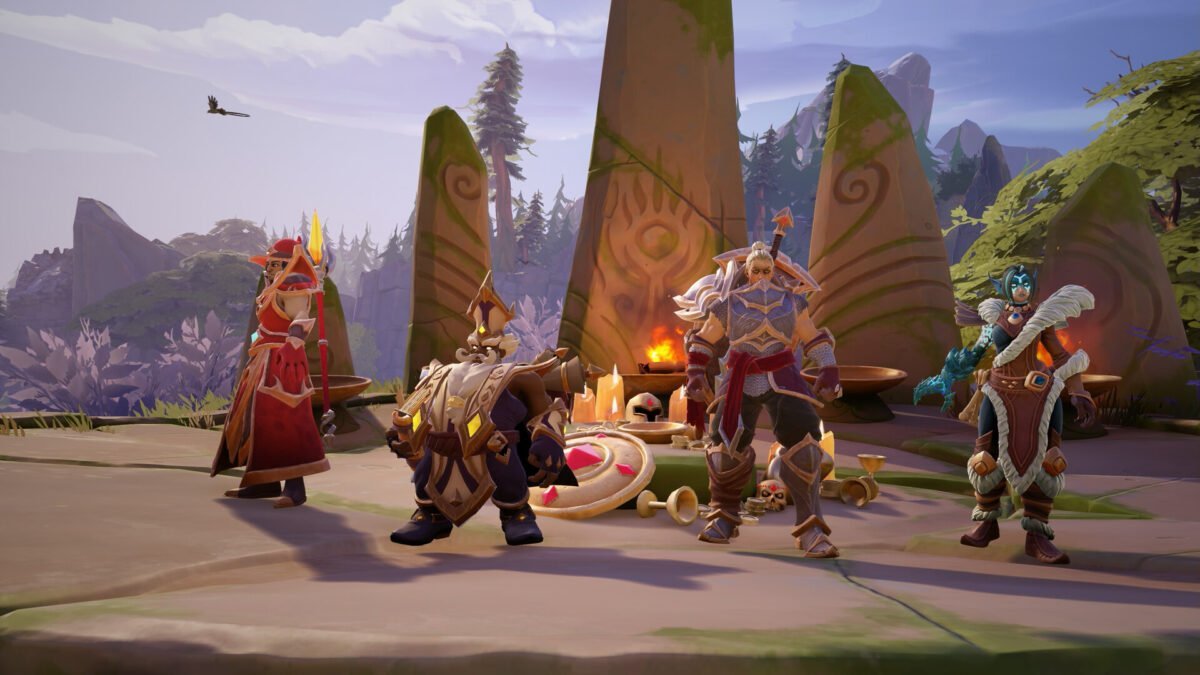
The Big Picture
I can’t highlight enough how Fellowship perfectly reframes the MMO experience. It feels like a spiritual cousin to World of Warcraft’s Mythic+ mode, but instead of being the peak of a mountain, it’s the entire game. That design choice feels oddly revolutionary in its simplicity.
For years, MMOs have trained us to treat dungeons as dessert; the reward after a long meal of leveling, crafting, and side-questing. Fellowship just serves the dessert first, and it’s delicious.
When I log off after hours of dungeon running, I quickly realize something: I didn’t miss the grind. I didn’t miss the travel time, the quest markers, or the sprawling world map. I just wanted to queue again, to test a new modifier, to see how far my group could push. It’s rare for a game in Early Access to feel this confident about what it wants to be, and to pull it off so well.
In this aspect, Fellowship doesn’t feel like a competitor to MMOs, but rather feels like an answer to them. It’s focused, unapologetic, and refreshingly clear about what it’s offering. Right now, it’s a small game with a big idea: that dungeons can stand on their own. Be its own genre, even.
There’s work to be done—more heroes, more loot, more polish—but the core is already beating strong. I’ve played enough Early Access games to know when a foundation is solid, and Fellowship feels rock steady where it counts. The runs are fun, the teamwork is alive, and the potential is enormous.
I’m hooked. It’s currently my main game, but even moving forward, I expect I’ll be back for every update, every new dungeon, every modifier that tries to break my team apart. Fellowship is essentially trying to create a new genre around a long-time popular gameplay element. It’s a bold endeavor, but even in Early Access, it’s apparent that Chief Rebel is the right team to do just that.
